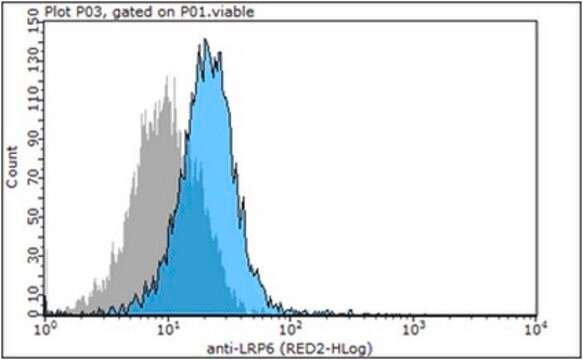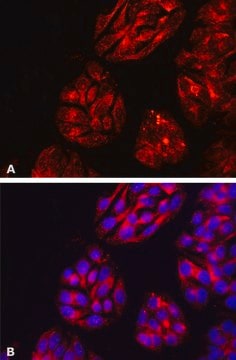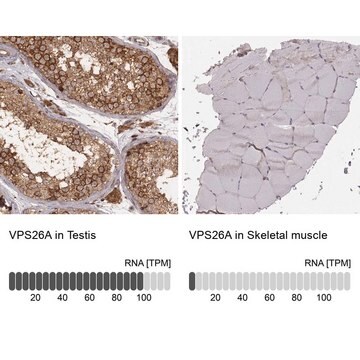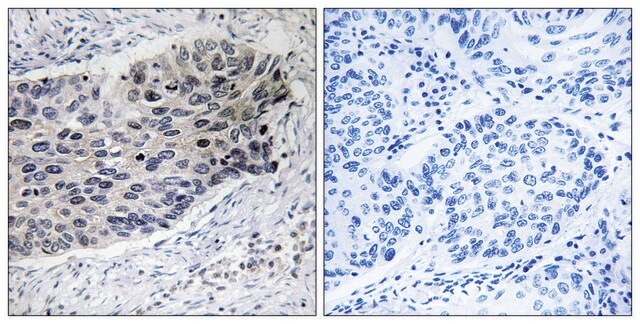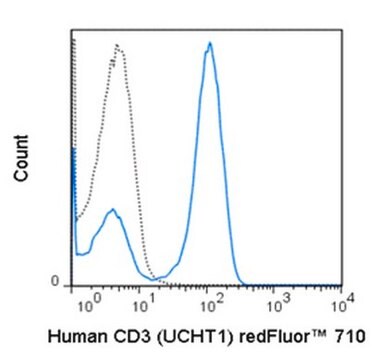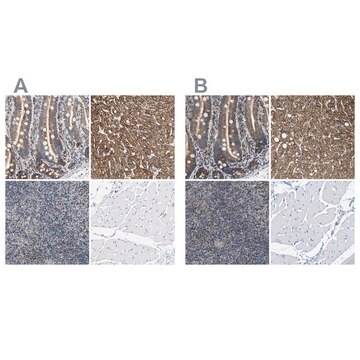CBL150-I
Anti-CD3e Antibody, clone UCHT1
clone UCHT1, from mouse
Synonym(s):
T-cell surface glycoprotein CD3 epsilon chain, CD3-epsilon, CD3e, T-cell surface antigen T3/Leu-4 epsilon chain
About This Item
Recommended Products
biological source
mouse
Quality Level
antibody form
purified immunoglobulin
antibody product type
primary antibodies
clone
UCHT1, monoclonal
species reactivity
human
technique(s)
ELISA: suitable
flow cytometry: suitable
immunocytochemistry: suitable
immunohistochemistry: suitable
immunoprecipitation (IP): suitable
isotype
IgG1κ
NCBI accession no.
UniProt accession no.
shipped in
dry ice
target post-translational modification
unmodified
Gene Information
human ... CD3E(916)
General description
Specificity
Immunogen
Application
ELISA Analysis: A representative lot was used as the capture antibody for the detection of epsilon-associated TCR complex proteins by sandwich ELISA (Poggi, A., et al. (1996). Int. Immunol. 8(12):1947-1953).
Immunocytochemistry Analysis: A representative lot detected the exogensously expressed human CD3 epsilon chain on the surface of murine T cells by flourescent immunocytochemistry (Clevers, H., et al. (1988). Eur. J. Immunol. 18(5):705-710).
Immunocytochemistry Analysis: A representative lot was employed to determined the plasma membrane and cytoplasmic CD3 immunoreactivity in T cell populations and T-ALL blast cells by flourescent immunocytochemistry (Campana, D., et al. (1987). J. Immunol. 138(2):648-655).
Immunohistochemistry Analysis: A representative lot detected CD3+ T cells (T3+) in the periglandular stromal aggregates in frozen dometrium sections from female donors undergone routine dilation and curettage procedures (Kamat, B.R., and Isaacson, P.G. (1987). Am. J. Pathol. 127(1):66-73).
Affects Function: A representative lot induced surface IL-2R expression and proliferation of human peripheral blood T lymphocytes (Van Wauwe, J.P., et al. (1984). J. Immunol. 133(1):129-132).
Flow Cytometry Analysis: A representative lot was employed for fluorescence activated cell sorting (FACS) of CD3+ human lymphocytes (Beverley, P.C., and Callard, R.E. (1981). Science. 11(4):329-334).
Inflammation & Immunology
Immunological Signaling
Quality
Flow Cytometry Analysis: 0.1 µg of this antibody detected CD3e in 1X10E6 human PBMC.
Target description
Physical form
Storage and Stability
Handling Recommendations: Upon receipt and prior to removing the cap, centrifuge the vial and gently mix the solution. Aliquot into microcentrifuge tubes and store at -20°C. Avoid repeated freeze/thaw cycles, which may damage IgG and affect product performance.
Other Notes
Disclaimer
Not finding the right product?
Try our Product Selector Tool.
recommended
Storage Class Code
12 - Non Combustible Liquids
WGK
WGK 2
Flash Point(F)
Not applicable
Flash Point(C)
Not applicable
Regulatory Listings
Regulatory Listings are mainly provided for chemical products. Only limited information can be provided here for non-chemical products. No entry means none of the components are listed. It is the user’s obligation to ensure the safe and legal use of the product.
JAN Code
CBL150-I:
Certificates of Analysis (COA)
Search for Certificates of Analysis (COA) by entering the products Lot/Batch Number. Lot and Batch Numbers can be found on a product’s label following the words ‘Lot’ or ‘Batch’.
Already Own This Product?
Find documentation for the products that you have recently purchased in the Document Library.
Our team of scientists has experience in all areas of research including Life Science, Material Science, Chemical Synthesis, Chromatography, Analytical and many others.
Contact Technical Service